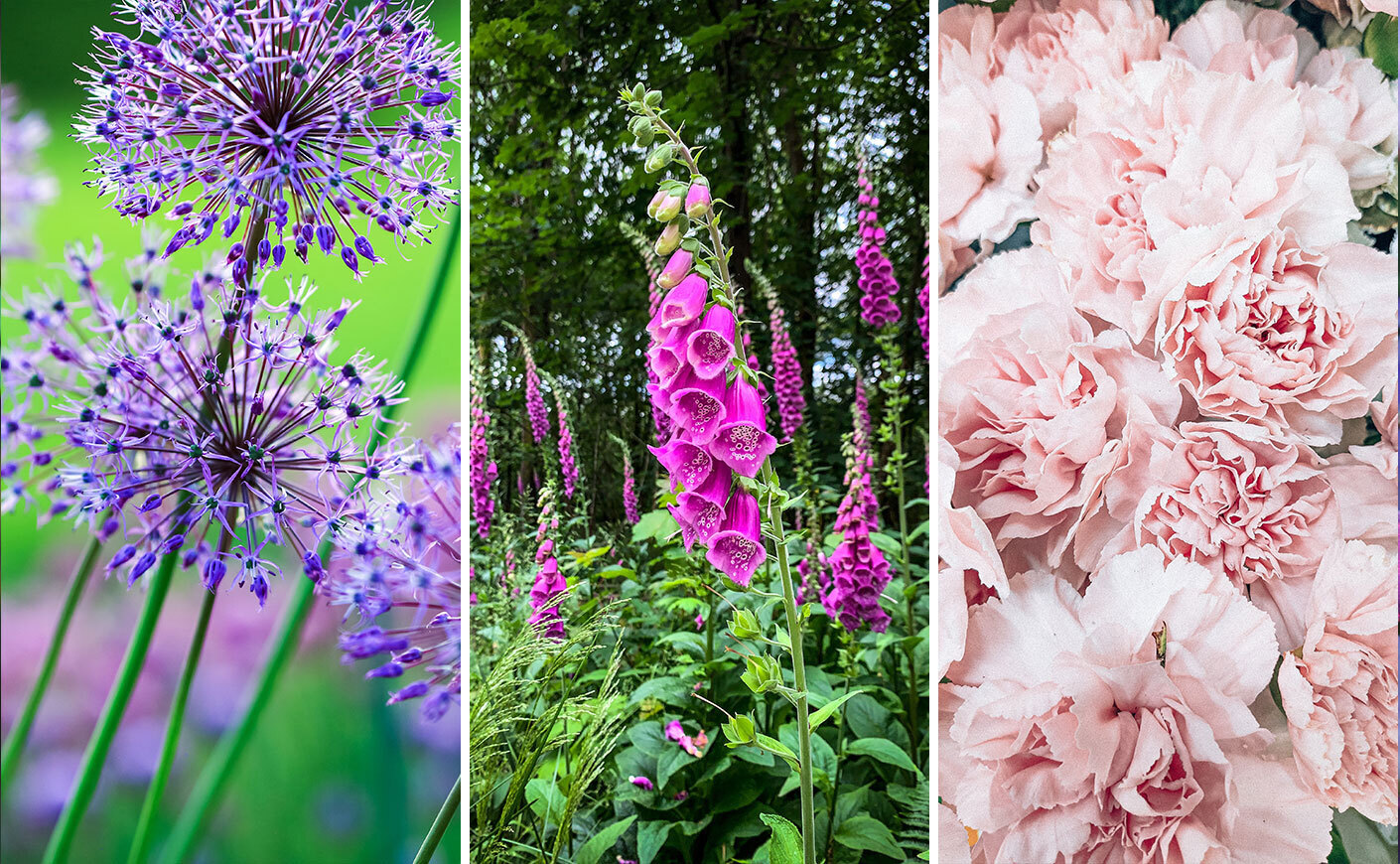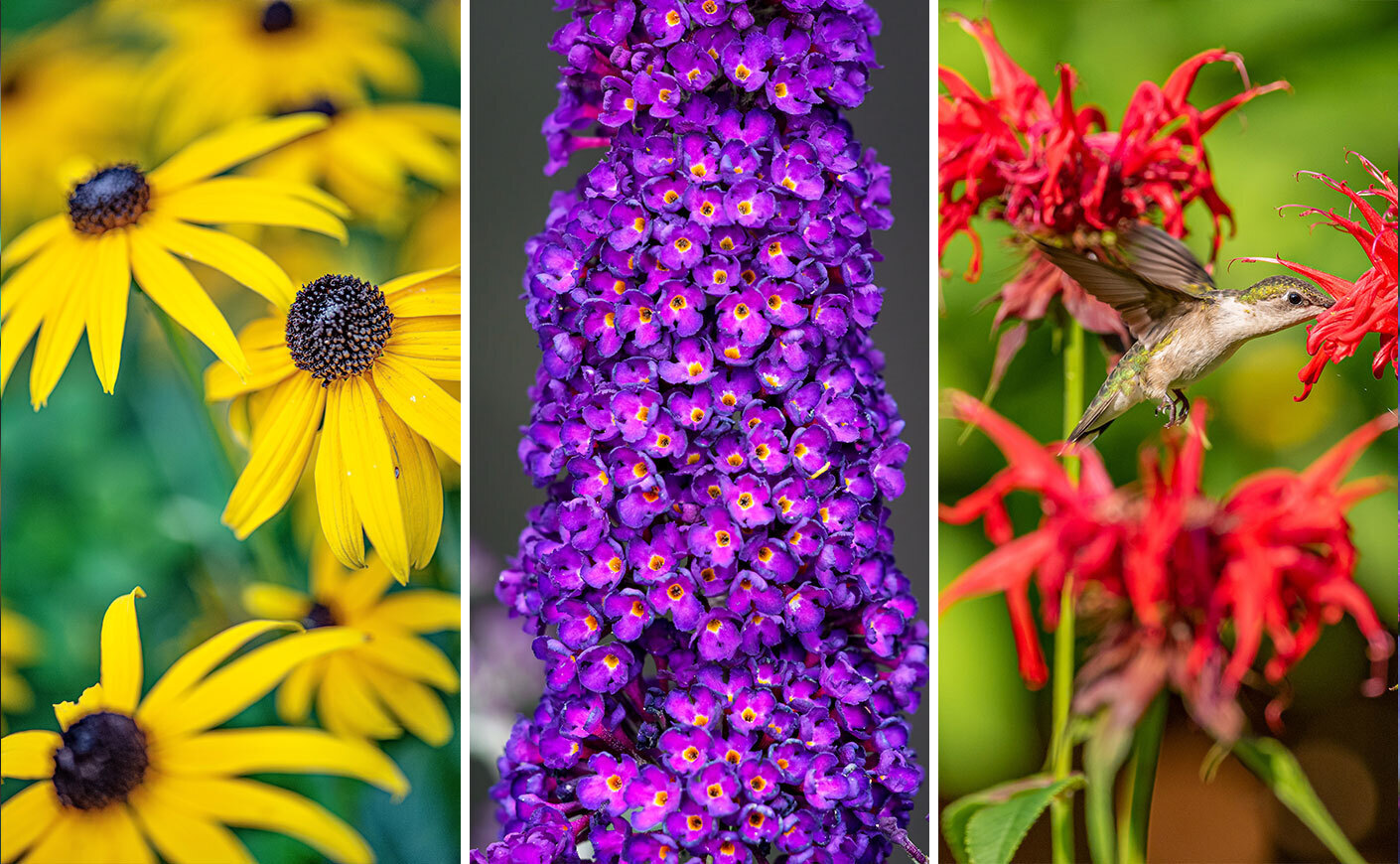March 21st, 2023
Critter Resistant Plants You’ll Love in 2023

March brings us back into daylight savings time and possibly marks the start of the warmer weather (or at least no additional snowfall). We hope you are using this extra sunshine to get outside and begin preparing for this year’s plantings. We’d hate for you to spend time and money on new gardening projects just for the rabbits and deer to eat them for lunch. With that in mind, this month we share our favorite perennials that not only look amazing, but won’t end up feeding the critters in your yard.
Spring Bloomers
Bleeding Hearts (Lamprocapnos spectabilis) – This shade loving plant gets its name from pink, heart-shaped flowers with a protruding white petal at the bottom that appears to be “bleeding”. It blooms in the cool days of spring and often disappears in the heat of summer. Never fear though, the roots stay alive and the plant will come back again the following spring. Give it plenty of room as it grows to about three feet high with a similar spread
Daffodils (Narcissus) – This popular Midwest bulb often signals the first signs of spring plant life. There are 36 species of this flora, but admiration for it has encouraged the development of over 26,000 cultivars in many color variants. Daffodils work well along a border, in perennial beds or with groundcover and should be grown in full sun with moist, well-drained soil.
Iris (Iris germanica) – The sun loving bearded flowers bloom in the late spring and attract the first butterflies of the year to your garden. While they do grow two to three feet high, they don’t take up much horizontal space. However, Irises self-propagate so be sure to leave plenty of room during initial planting.

Summer Flowering
Allium (Allium) – With over 700 varieties worldwide, you are sure find a type to suit your floral bed. These beauties are part of the same family as onions, shallots and garlic but have been popular among botanists since the late 1800s. Allium will grow best in full sun and are drought tolerant. Colors and height vary and most flourish in early summer.
Foxglove (Digitalis purpurea) – This flower is sometimes also known as fairy bells, and it certainly does bring enchantment to your garden! With flowering spikes that blossom three to four feet tall, it’s a favorite choice for attracting hummingbirds and adding vertical interest to the yard. The main bloom stage is early summer, but if you cut back the leading spikes you may get a second round of blossoms. Each plant can produce over one million seeds, so be sure to remove dead foliage to keep it within your desired area.
Peonies (Paeonia suffruticosa) – This popular mainstay is available in three sizes. Tree peonies grow four to seven feet tall with a 5-foot spread. Intersectional and bush peonies can reach one to three feet tall and wide. Picking the right spot is important. They need a well-drained foundation to keep the roots from becoming soggy and at least six hours of sun, although the tree peonies prefer light shade during the midday heat.

Flowers All Season
Black-eyed Susan (Rudbeckia hirtaI) – These pollinator sensations will display from June through August. They are easy to grow and thrive under high sun (even forgiving a little neglect) but overcrowding or too much water can lead to leaf fungus. Black-eyed Susan grows one to three feet tall and need to be spaced 18 inches apart. Prune faded flowers to prolong budding and divide plants up every three to four years.
Butterfly Bush (Buddleia davidii) – The fast-growing shrub can be invasive in warmer climates – but lucky for us – Chicago winters keep it in check. Its large pointed flowers are fragrant and attract a diverse array of butterfly species. They grow well in average dirt and need at least six hours of daylight. Eliminate dead flowers quickly to promote new blooms.
Bee balm (Monarda) – Indigenous to America, this summer plant comes in many gorgeous colors with flowers that resemble fireworks. Most species grow two to four feet tall and do well in several soil types. Bee balm doesn’t require fertilization and should be deadheaded to promote new growth.
We hope this article has provided some inspiration for your summer planting plans that won’t end up providing a banquet for the wildlife. No matter which flowers you choose, all of the above suggestions also make wonderful clippings to enjoy indoors. If you’re looking for some expert help with your landscape design, call us now to get on the schedule for 2023 with POE!




